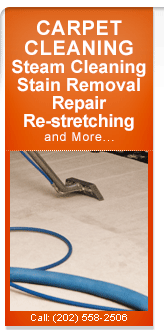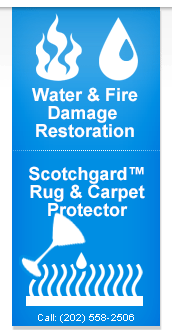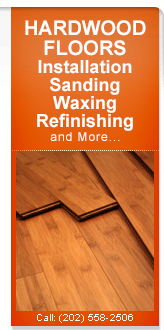 |
|
Rug CleaningEven though your rug looks clean, normal settling of dust is abrasive and will shorten the life of your rug. It's recommended that you have your rug cleaned once year. We specialize in the following service for rugs:
For a Free Estimate of your Rug Cleaning call us at: Our Rug Cleaning Methods:Deep CleaningDaily vacuuming is the most important cleaning activity, but deep extraction cleaning must be performed to remove stubborn or embedded soil. The Carpet and Rug Institute recommends that carpet be dry- or wet-extraction cleaned a minimum of every 12 or 18 months before it shows soiling. Use a cleaning method recommended by the carpet manufacturer to maintain their warranty. Carpet should receive regular deep cleaning to maintain its good looks. A carpet cleaning professional may be hired or carpet cleaning equipment may be purchased or rented for do-it-yourself cleaning. The fiber system used should be the primary factor in selecting a cleaning method. The majority of carpet manufactured today is constructed with synthetic fibers such as nylon, polyester, or olefin, and may be cleaned with most cleaning methods. Natural fibers may require specialized care. Following are general guidelines for these fiber systems: Wool - Wool fibers may be cleaned using all cleaning methods, although excessive agitation and excessive heat should be avoided. Wool is easily damaged by bleaches and alkalies. Wool should be cleaned with neutral detergents (pH 5.0-8.0) and dried quickly to limit yellowing or browning. Cotton/Rayon - Cotton and rayon are cellulosic fibers and may be cleaned using all cleaning methods. Most cellulosic fibers are subject to browning if prolonged drying occurs or if alkaline solutions are used. Shrinking may occur if these fibers are overwet. Avoid excessive agitation. Silk - Silk should be cleaned using a dry cleaning process. These fibers may be damaged by high temperatures, high pH (>9), sunlight, and will lose strength when wet. The cleaning of silk fibers is best left to the carpet cleaning professional. Sisal and Other Plant Fibers - Plant fibers used in carpet construction, including sisal, cotton, jute, coconut (coir), pineapple, ramie, and hemp, have characteristics similar to cotton. These fibers may be cleaned with all cleaning methods, but dry extraction and dry foam extraction are most often recommended. To limit color change or odor transfer, a pH of less than 7.5 should be used and precautions should be taken to expedite rapid drying. It is best to use a carpet cleaning professional. There are five accepted methods for cleaning carpet make from synthetic fibers. Rely on the carpet manufacturer's recommendations. When choosing any cleaning method, select cleaning agents sold especially for stain resistant carpet cleaning, and follow the directions for dilution and application. Never use soap, laundry detergent, automatic dishwasher detergent, or any of the strong household cleaning agents intended for use on hard surfaces such as woodwork, linoleum, or tile. For best cleaning results, always pre vacuum the area to be cleaned and apply a preconditioning solution prior to cleaning. A precondition solution is a detergent solution applied to the carpet prior to cleaning to begin loosening soil. These solutions typically require 8-10 minutes to begin the soil loosening process. Absorbent Pad (Bonnet) MethodThe absorbent pad method should be used only by a properly trained cleaning professional. The rotary bonnet method uses a machine similar to a floor buffer with an absorbent spin pad attached to remove the soil. The spin pad absorbs soil onto the pad, and soil is removed when the pad is rinsed. To reduce pile distortion, keep the absorbent pad well lubricated with cleaning solution. Replace pad often to prevent transfer of soil back to the carpet face. Dry Extraction (Polymer Compound) MethodAn absorbent compound saturated with detergents and solvents is brushed in and around the fibers with especially-designed machines or brushes. The compound attaches to the soil particles, and both the soil and compound are then removed by vacuuming. Dry Foam Extraction MethodIn dry foam cleaning a detergent solution is whipped into a foam and applied to the carpet. The foam is worked into the carpet by a especially-designed machine with reel-type brushes, followed by wet vacuuming. Some machines have their own extraction capabilities while others need thorough vacuuming after the carpet is dry. Hot Water Extraction MethodThis method is sometimes called "steam cleaning". Areas of heavy use are preconditioned to suspend ground-in soil, then a pressurized cleaning solution is injected into the pile. Suspended soil and solution are immediately extracted. Follow directions carefully and avoid over wetting. Ensure speedy drying by using fans, operating the building air conditioning system (HVAC) in the "on" position, and by performing additional drying strokes. Rotary ShampooThe rotary shampoo method uses equipment similar to the rotary bonnet method, except that a cleaning solution is injected onto the carpet before cleaning or through especially-designed brushes. Never use a do-it-yourself machine designed for hard surface floor covering with counter rotating (rotary) brushes. Pile distortion or untwisting of the fiber can occur. Rug Cleaning Tips |
|
|
Carpet Cleaning Washington DC
Phone: 202-558-2506 | Hours: Mon-Sun 8:00am - 8:00pmCopyrights © 2004-2026 carpet-cleaning-washington-dc.com All Rights Reserved.
|
|






